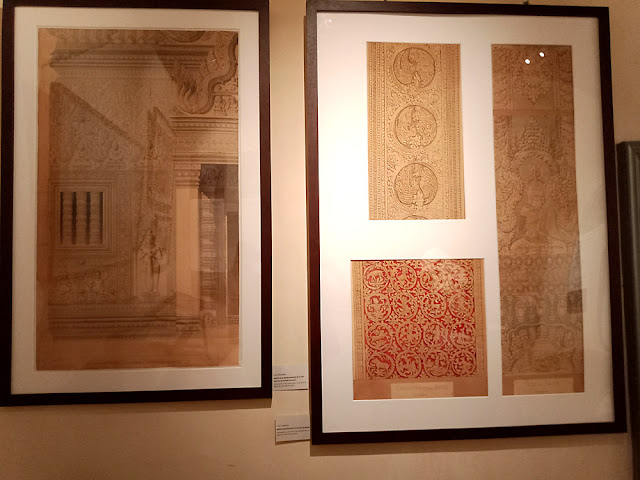There is a street in Loches named after him.
The naval officer, explorer, talented draftsman, curator and native of Loches, Louis Delaporte was the first to bring the temples at Angkor Wat and Khmer art to the attention of the French general public. Nowadays the temples are famous the world over and the site is UNESCO World Heritage listed. This year there is an exhibition honouring Delaporte in Loches, on the centenary of his death.
Louis Delaporte's Navy Lieutenant's uniform. This is for an adult, but it is modern young adolescent size.
It was in Cochin, in 1866, when Louis Delaporte was recruited by Commander Doudart de Lagrée to join a mission up the Mekong. His skill with a pencil was surely what led to the young 24 year old sailor being appointed as cartographer and official artist on the mission. The aim was to establish the navigability of the river with a view to a possible commercial link with China. The French Navy convoy made a detour via the ruins of the temple of Angkor Wat. It was a revelation for the young man from Loches. Little did he know that these vestiges of the past virtually buried under the jungle would transform his life.
A cast made by Delaporte's team in 1881-82 of a low relief frieze from Angkor Wat. It shows a scene from the battle of Lanka. The central character is the demon Ravana in his chariot. He has kidnapped Rama's wife and is being attacked by Rama's allies the monkeys.
The exhibition underlines how Delaporte's role was to record in 'photographic' detail the sculptures, the people, their way of life, the landscape, in pencil and watercolours. His talent was recognised from the age of 13, when his artistic skill permitted him to attend a special naval college, and then the naval school at Brest when he was 16. Two years later he was on an expedition to Mexico.
Two casts and a watercolour from Angkor Wat.
This first expedition, and those that followed, were utterly fulfilling. Driven by his enthusiasm he produced many more drawings than his orders required. He was highly observant of his surroundings, and worked in a supportive environment, particularly in Asia. His curiosity is a legacy for future ethnographers.
Two casts of devata from the 12th century. Devata are female divinities and feature on many walls and columns at Angkor Wat. Often standing, bejewelled and serene, they have a protective role.
Once he returned to France Delaporte contributed to a vast Atlas of Exploration published in 1873. He devoted the remainder of his life to his passion for Khmer architecture, and worked at the Museum of Indochina at the Trocadero. He left this job in 1924 at the age of 82.
The Delaporte family home in Loches.
Drawings of Angkor Wat by Louis Delaporte.
Watercolour of Angkor Wat by Louis Delaporte.
Letters, notebook pages and other ephemera from the Louis Delaporte archive.
Further Info: https://www.ville-loches.fr/exposition-angkor-louis-delaporte-article-3-10-147.html










No comments:
Post a Comment